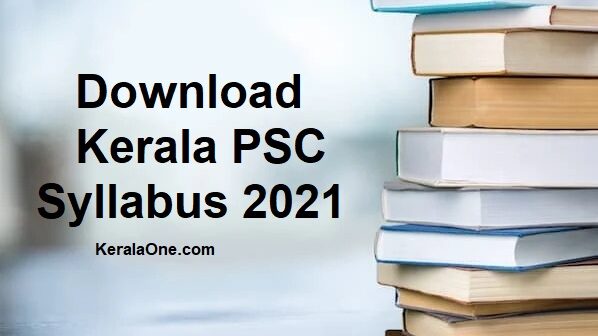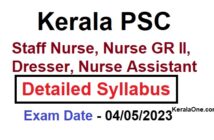Deprecated: Creation of dynamic property InsertPostAds::$settings is deprecated in /home4/keralaon/public_html/wp-content/plugins/insert-post-ads/insert-post-ads.php on line 427
KPSC Lecturer in Statistics Detailed Syllabus 2021:- Kerala Public Service Commission Lecturer in Statistics and Demography in Medical Education (Category Number 280/2019) Syllabus has published. Candidates can Download Lecturer in Statistics Syllabus May 2021 here.
Lecturer in Statistics and Demography Syllabus 2021
MODULE 1:Random variables and distribution function, Univariate discrete
and continuous distributions, Bivariate distributions- Joint, conditional and
marginal distributions, generating functions, bivariate random vector,
Multinomial and multivariate normal distributions, Sampling distributions and
applications. Distributions of functions of random variables, Order statistics,
Distributions of order statistics, Distribution of quadratic forms in normal
variables. Tests of hypotheses-one sample and two sample problems, Tests of
hypothesis about mean vector of a multivariate normal distribution,
Hotelling’s T2 and Mahalanobi’s D2. Classification problem.
MODULE 2: Probability space, Properties of probability measure,
independence of events, sequence of events, Borel zero-one law. Conditional
Probability and Bayes Theorem. Stochastic convergence in distributions,
convergence in probability, almost sure convergence and convergence in the
r-th mean, their interrelationships, examples and counter examples,
Characteristic function and their elementary properties. Weak and strong law
of large numbers, central limit theorem; Introduction to Stochastic processes,
classification of stochastic processes, processes with stationary independent
increments, Markovprocess, renewal process, martingales. Markov chains, nstep transition probability and its limits. Poisson process, pure birth process,
birth and death processes. Branching process, offspring distribution,
extinction probabilities.
MODULE 3: Point estimation, general properties of estimators, Unbiasedness;
strong, weak and squared error consistency, invariance property of consistent
estimator, Fisher’s measure of information, Cramer-Rao inequality. Efficiency,
Likelihood function, Sufficiency, Rao-Blackwell and Lehmann-Scheffe theorems
and their applications. Various methods of estimation-MLE, method of moments,
minimum chi-square, least-squares and properties of these estimators, location
and scale family of distributions, Neyman-Pearson Theory of Testing Hypotheses,
Unbiasedness, UMPU, LMP, LMPU, tests of hypotheses concerning a real
parameter, Likelihood ratio tests, asymptotic properties, Sequential procedures,
SPRT-Wald’s identity-OC and ASN functions, Confidence sets, shortest confidence
intervals, interval estimation.
MODULE 4: Estimation of population mean and population variance under
various methods of probability sampling designs with or without
replacement, simple random sampling, PPS sampling, Stratified random
sampling, systematic sampling, IPPS sampling, Midzuno-Sen scheme of
sampling, Cluster sampling and two stage sampling. Various methods of
allocation in stratified random sampling, post-stratification, applications of
double sampling for stratified random sampling, Estimation using auxiliary
information in survey sampling-ratio estimator, regression estimator, double
sampling for ratio and regression method of estimation. General linear
models, estimability of linear parametric functions, Gauss-Markov theorem,
ANOVA- one-way classification, two-way classification with equal and unequal
number of observations per cell, Standard designs: CRD, RBD, LSD, Efficiency
of design and comparison. Statistical analysis of symmetrical factorial
designs. Total and partial confounding in 2n
, 3n and pn
experiments.Incomplete block designs, BIBD, PBIBD. missing and mixed plot
analysis in RBD, LSD.
Module 5:Sources of Demographic Data: Census-Vital Registration SystemCivil Registration System(CRS), Sample Registration System(SRS), Population
Register and Sample Surveys- NFHS, NSSO, Quality of Data – Smoothing
techniques, Indices – Whipple’ , Myer’s, UN, Chandrasekhar and Deming
method. Population composition-Age, Sex – Population Pyramid, Religion, Caste,
Education, Language, Income, Marriage and Family. Components of population
change: Fertility-Mortality-Migration, Balancing equation, Population Scenario of
India-History of population growth-Population size and growth in states with
special emphasis on Kerala.
Module 6: Demographic Measures: Fertility Measures, CBR, ASFR, TFR, GRR,
NRR, ASMFR, TMFR, Replacement Index; Measures of Nuptiality – Crude Ma
(Marks-10)rriage rate, General Marriage rate, Age – Specific Marriage rate , Total
Marriage rate, Mean Age at Marriage, Singulate Mean Age at Marriage.
Mortality Measures – CDR, ASDR, Longivity( e0
0 ), Infant Mortality Measures–
Infant Mortality Rate, Neonatal mortality rate, Post neonatal mortality, Perinatal
mortality, Foetal Death, Childhood mortality rates, Child mortality and Maternal
Mortality , Standardization of rates. Methods of Population estimation and
Projection – Mathematical and Cohort Component methods,
Life table- Types of life table, Columns of Life table, construction and
interpretation – Linear, exponential, Reed and Merrell, Greville, Chiang, Keyfitz
and Fraunthal, Applications and Uses of Life table.
Module 7: Theories and Models: Population growth theories – Malthus,
Optimum, Marx, Demographic Transition. Fertility theories- Freedman, Caldwell,
Social and Biological Theories, Kingsly Davis, Blake and Becker Model,
Easterlin, Leibenstein. Theories of migration by Ravenstein, Stouffer, Ziffe, Lee,
Todaro.
Structure of Population – Stable Population, Quasi-stable population, Stationary
Population, Lotka’s Stable Population Theory, Applications – Population
Momentum, Reproductive value. Model life tables – U. N. Model life table, Coale
& Demmeny model life table U. N. model life table for developing countries,
Model stable population and Rogers & Castro model migration schedule.
MODULE 8: Population, Health & Development:Population Policy,
Definitions, Policy goals and Types of policies, Overview of population policy in
Developed and Developing countries and in India. National Health and Family
Planning Programme in India-History, MCH Programmes, Reproductive and Child
Health Programmes, Health policy: National and state – Critical appraisal, Health
Programmes and Health Care Systems in India – National Health ProgrammesNRHM, NHM, NUHM.
Epidemiology- Principles of Epidemiology, Sources of data on morbidity,
Epidemiological Methods, Measurement of health and diseases, Incidence and
prevalence rates of morbidity, Morbidity and Mortality link, Health and
Development- Social determinants of health, inter linkages between health and
Development at local and national levels, globalization and poverty, impact of
development Policies on health, Health equity.
Reproductive Health, Definition, General concepts, Maternal and child health,
Prenatal and Antenatal care, sanitation, Hygiene, Reproductive Rights,
STD,RTI,HIV/AIDS, Male involvement in Reproductive health- Indian Scenario.
Population and Environment, Density and Carrying capacity- Population Growth
and Density Changes, Population and Resources – types of Resources: PhysicalBiological and Human. Impact of Population Growth on Resources.
Demography of Ageing, Social aspects of ageing, Economic aspects of ageing,
Ageing and Health, Ageing policies and programmes.
Module 9: Linear Algebra: Vector spaces, spans and linear independence,
basis, dimension, linear maps, matrix of a linear map, determinants,
characteristic polynomials, eigen values and eigen vectors, diagonalisation of
matrices, solutions of linear equations and Cayley Hamilton theorem.
Module 10:Real Analysis: Sequences and series of real numbers, limit of a
function, continuous functions, uniform continuity, di_erentiation, mean value
theorem, L’Hospital’s rules, Taylor’s theorem, Riemann integral and its
properties, Fundamental theorem of calculus.




